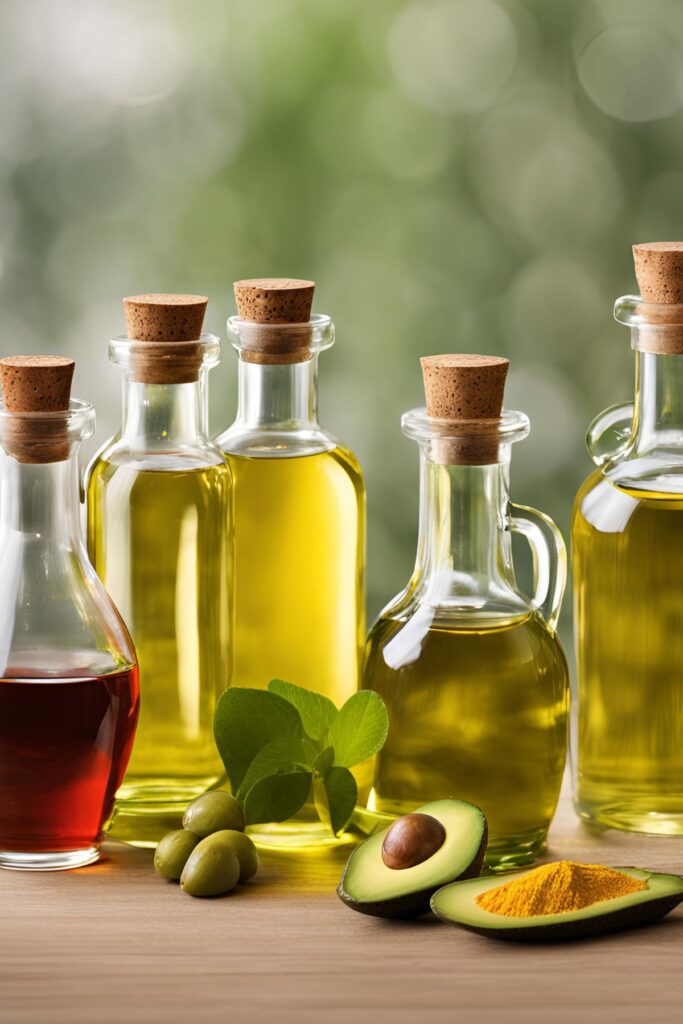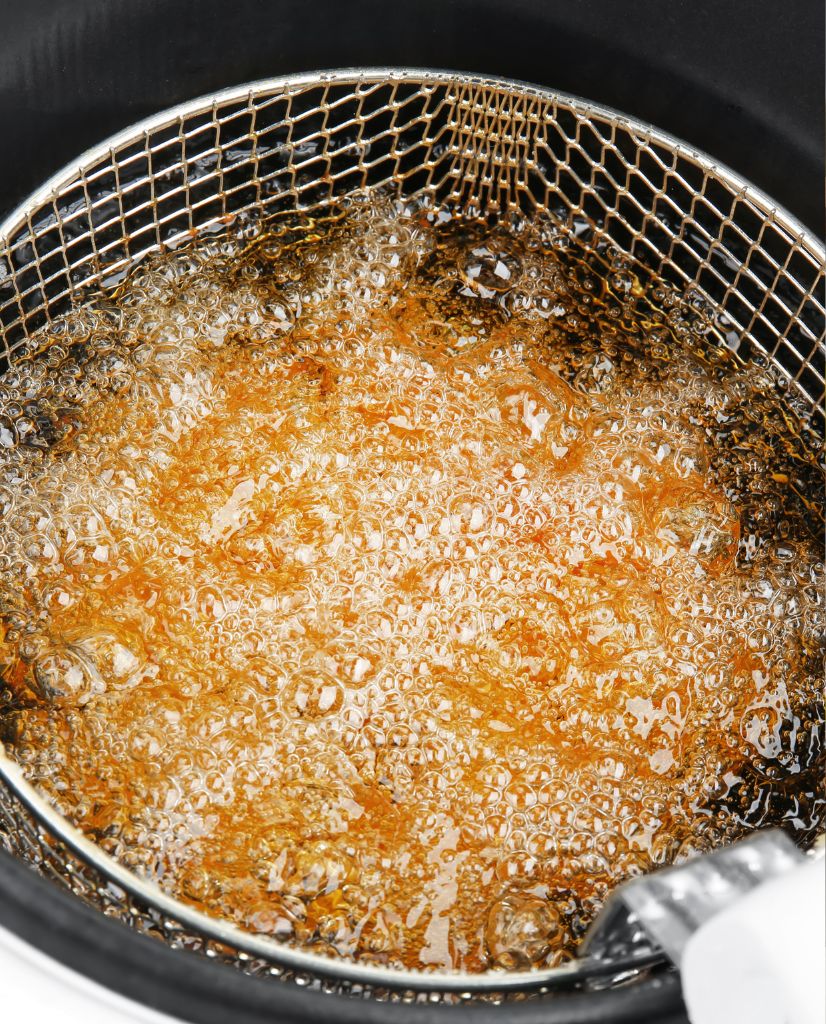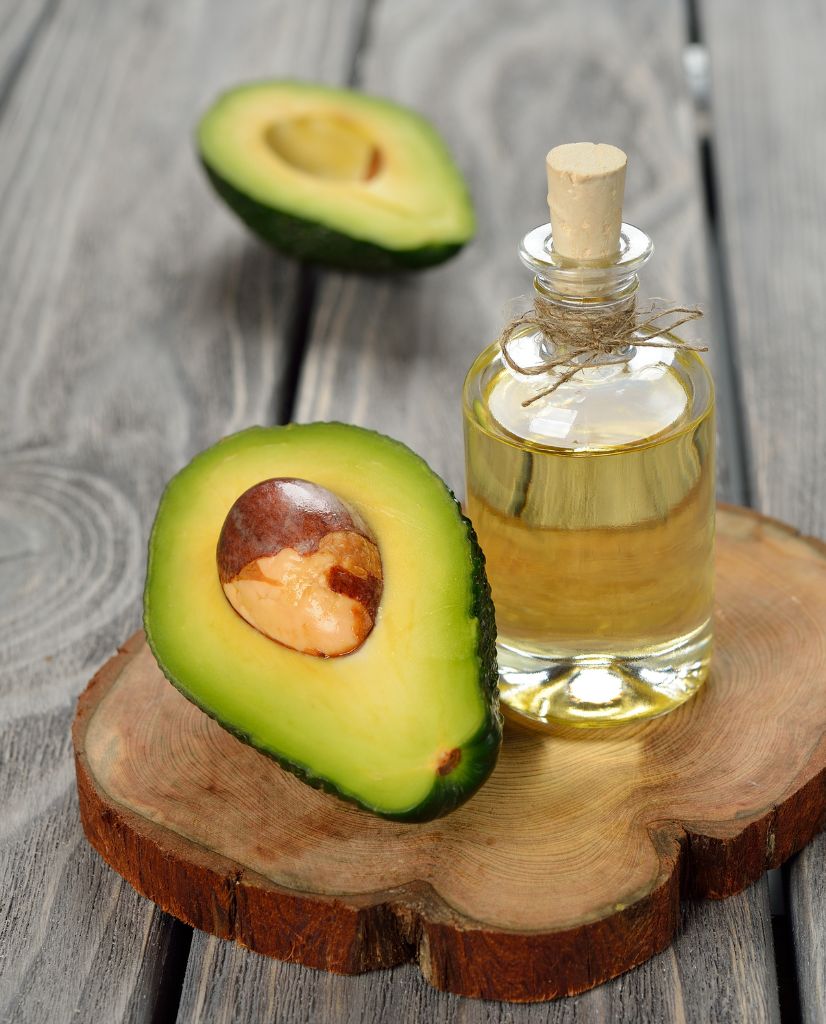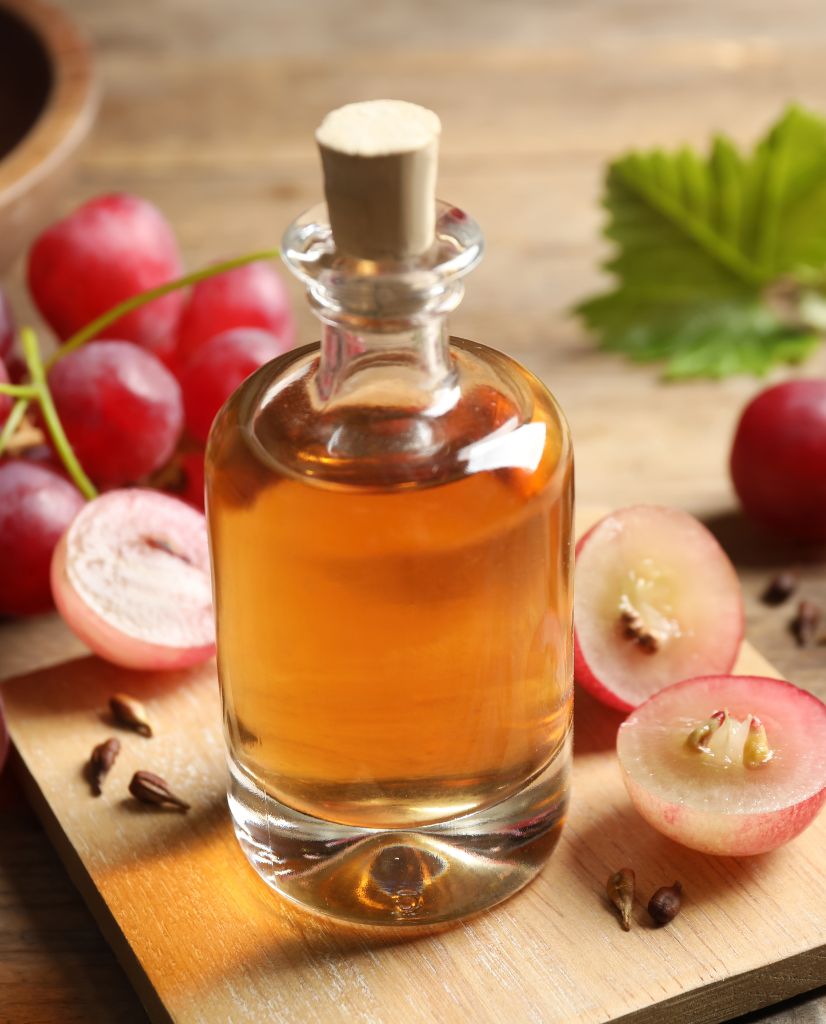Fried chicken is more than just food—it’s comfort, tradition, and that unforgettable crunch with every bite. But let’s be honest, the oil you choose to fry chicken can make or break that perfect moment. It surely has done both for me so many times. But, don’t worry, now that I am an expert, I’ll pass on my experience so that your moments from now onwards are always perfect.

You’re probably here because you’ve asked yourself, “What’s the right oil for frying chicken at home?” It’s a question I’ve grappled with too, trying to strike that delicate balance between flavor, health, and getting the ideal crisp. Whether it’s the avocado oil craze, canola’s reliable performance, the Mediterranean charm of olive oil, or the high-heat versatility of grapeseed and sunflower oils, each has its place. But which one is right for your kitchen?
I grew up in an Italian household where Sunday dinners revolved around food made with love—and a lot of frying. My mom swore by olive oil, while my grandmother only ever preferred canola all her life. Interestingly, my mom loved baked chicken more but my grandmother would always say the real crisp comes with deep-frying chicken only.
Now, in my own kitchen, I’ve found myself torn between tradition, health-conscious decisions, and the desire to make that crispiest chicken every time. Over these years, I’ve tested, tasted, and tweaked with all those oils mostly used around, trying to figure out what gives that perfect bite every time.
So, whether you’re chasing family traditions or looking for something new, I’ll break down the best oils for frying chicken. By the end, you’ll know exactly what works for your taste buds and kitchen. Let’s try and find your perfect fry!
How to Choose the Best Frying Oil?
When it comes to choosing the best oil for frying, it’s not just about grabbing what’s in the pantry. There’s a bit more to consider before finding your perfect frying partner.
Smoke Point
Ever had your kitchen turn into a smoky mess before your chicken even hit that golden brown? That’s your oil waving the white flag too early. When frying, you need an oil that can take the heat, but not burn—ideally in the 350-400°F range. Avocado oil is your high-heat champion here, with a smoke point of around 390–470 °F, perfect if you want to avoid the drama.
Canola and grapeseed oils are also strong contenders, holding up well to heat, while olive oil can be a bit too delicate for serious frying unless you keep the temperature lower. Sunflower oil? It does the job, but it’s better for medium-high frying.
Flavor Profile
What’s the secret to giving your chicken that irresistible flavor? It’s all in the oil. Some oils carry their own rich, buttery undertones, while others stay in the background, letting your seasonings shine. Olive oil brings that signature Mediterranean vibe—a bold, fruity flavor that can turn a simple cutlet into a restaurant-worthy dish.
On the other hand, sunflower and canola oils are more neutral, letting your herbs and spices steal the show. If you want the best of both worlds, avocado oil has a mild flavor that adds a hint of richness without overpowering your seasoning.
Health Benefits
We all love indulging in crispy fried food, but it’s even better when it’s not at the expense of our health. If you’re looking for heart-healthy choices, avocado oil is loaded with good-for-you fats and vitamins, making it one of the healthiest options.
Olive oil is also a nutritional powerhouse, rich in antioxidants and great for heart health—just ask any Italian grandma! Canola oil boasts lower saturated fats, keeping cholesterol levels in check, and grapeseed oil offers a solid dose of Vitamin E.
For a more budget-friendly option with neutral benefits, sunflower oil is a solid choice but lacks some of the nutritional perks the others bring to the table.
Cost and Availability
Let’s be real—sometimes what’s most convenient is what makes it into the cart. Not everyone has a gourmet store nearby, and some oils can feel like a luxury splurge. Canola and sunflower oils tend to win this round—affordable, available in almost every supermarket, and perfect for everyday frying.
Olive oil can be pricier, especially the good stuff, but you can often find affordable options that work just fine. Avocado and grapeseed oils, while fantastic in terms of health benefits and performance, can sometimes be on the expensive side and may not be as easy to track down.
I have never had a problem trying to find any of them near my current house. But that doesn’t mean everyone living everywhere will also find it easy. Back in time, when we used to live with our grandma, in that small town, I had never heard of grapeseed oil, and avocado oil felt like breaking your bank.
So, I understand if cost is an important deciding factor for you. Find the best possible canola or sunflower oil near your house, they do the task just fine. Just go easy on the quantity you consume, because as per the generel perception, they are not on the healthy side, as much as the other three are.
As they say, cooking isn’t just about following a recipe; it’s about bringing your family traditions and personal preferences to life on the plate. The oil you choose might be a nod to how your Nonna made her chicken, or maybe it’s about experimenting with healthier, modern options. Whatever your story is, there’s an oil that can help you fry up something perfect—and delicious—for your table
You might also like Restaurant-Style Chicken Saltimbocca Recipe

Olive Oil: The Classic Italian Choice
When you think of Italian kitchens, olive oil is the first thing that comes to mind. It’s more than just an ingredient; it’s tradition, flavor, and heart all in one bottle.

Flavor and Smoke Point
Extra virgin olive oil brings a bold, fruity flavor that adds depth to your fried chicken. You can almost taste the sun-soaked olives with every bite. Its smoke point sits around 400°F, which means it can handle moderate heat, but you’ve got to be a little careful—go too hot, and you’ll lose that delicate flavor to a burnt mess.
Health Benefits
- Supports Heart Health: Helps reduce the risk of heart disease by lowering bad cholesterol and increasing good cholesterol.
- Anti-Inflammatory: Contains compounds that reduce inflammation in the body.
- Rich in Antioxidants: Provides antioxidants that help fight free radicals and protect cells.
- Supports Digestive Health: May improve digestion and reduce the risk of digestive disorders.
- Promotes Healthy Skin: Moisturizes and protects the skin, helping to maintain a youthful appearance.
- May Improve Bone Health: Contains nutrients that support bone health and may reduce the risk of osteoporosis.
As an Italian, olive oil is more than just a cooking choice—it’s a piece of home. I still remember how my mother would drizzle it over everything, and the smell of it heating up in the pan takes me right back to her kitchen. It’s the taste of family dinners, sitting around the table with a spread of homemade dishes.
When to Use
If you’re looking to add a hint of that savory, fruity olive flavor to your chicken, this is your oil. It’s perfect for those times when you want your meal to taste like something straight out of an Italian kitchen. Just remember to keep an eye on the temperature, as olive oil doesn’t love super high heat. Keep it in the moderate range, and you’ll be rewarded with that golden, crispy bite every time.
Avocado Oil: The Health-Conscious Option
If you’re like me and have been on a journey to make healthier choices, avocado oil might just become your new best friend in the kitchen. It’s not only great for your heart but also practically foolproof when it comes to frying. With its high smoke point, you can cook up crispy, golden chicken without worrying about burning the oil—or your meal.

Flavor and Smoke Point
Avocado oil has a mild, nutty taste, which is perfect if you’re feeding a crowd with different tastes. It doesn’t overpower your seasoning, letting the flavors of your chicken really shine.
One of the highest smoke point at around 510-520°F, I look at avocado oil for high-heat frying. You won’t have to stress about the oil breaking down before your chicken is perfectly crispy.
Health Benefits
- Supports Heart Health: Packed with monounsaturated fats that can help lower bad cholesterol (LDL) and raise good cholesterol (HDL).
- Anti-Inflammatory: The high oleic acid content helps reduce inflammation, which is beneficial for overall health.
- Boosts Nutrient Absorption: Avocado oil helps your body absorb more fat-soluble vitamins, like vitamins A, D, E, and K, from your meals.
- Promotes Eye Health: It contains lutein, an antioxidant that’s important for keeping your eyes healthy and reducing the risk of age-related eye diseases.
- Good for Skin: Rich in vitamin E and healthy fats, avocado oil also nourishes your skin from the inside out, promoting elasticity and reducing dryness.
- May Aid Weight Loss: The healthy fats in avocado oil can help you feel fuller longer, reducing the likelihood of overeating.
When to Use
Avocado oil is a no-brainer if you want a frying oil that provides perfect crispiness without the overpowering flavor or health concerns associated with processed oils. Whether you’re cooking for health-conscious friends or simply prefer a clean, neutral flavor, avocado oil delivers every time.
Plus, with such a high smoke point, there’s little room for error—ideal if you prefer to keep things simple while still craving that golden, crispy finish.
Canola Oil: The Budget-Friendly Choice
Canola oil was my family’s go-to for frying, mainly because it was easy on the wallet and always available. Over time, though, I’ve found myself rethinking its place in my kitchen.

Flavor and Smoke Point
Canola has a neutral flavor and a smoke point of 400°F, making it versatile but lacking the depth of flavor that other oils bring to the table.
Health Benefits
- Supports Heart Health: Advertised as heart-healthy due to its low saturated fat content.
- Omega-3 Fatty Acids: Contains omega-3s, which can be beneficial for heart health.
- Low in Trans Fats: Usually free from trans fats, though processing methods vary.
Negatives
- Highly Processed: Often goes through extensive processing, which can strip away natural nutrients.
- High in Omega-6 Fatty Acids: Contains high levels of omega-6s, which can be inflammatory if not balanced with omega-3s.
- Potential for GMOs: Most canola oil is made from genetically modified crops, which some people prefer to avoid.
When to Use
If you’re cooking on a budget or need a large quantity of oil for a crowd, canola oil does the job. But if you’re looking for richer flavors or a boost in nutritional benefits, it might be worth exploring other options.
Grapeseed Oil: The Light and Crisp Option
One day while I was searching for a lighter frying oil option, I came across grapeseed oil. It’s since become a go-to when I want that perfect crisp without the heaviness of other oils. Give it a try and I am sure it will become your favorite too.

Flavor and Smoke Point
It has a light, neutral flavor and a smoke point of around 420°F. This makes it ideal for frying when you want the oil to stay out of the spotlight and let your chicken shine.
Health Benefits
- Low in Saturated Fats: Contains minimal saturated fats, making it a healthier choice for cooking.
- High in Vitamin E: Packed with vitamin E, which acts as a powerful antioxidant.
- Supports Heart Health: The oil’s composition can contribute to a balanced diet and support cardiovascular health.
When to Use
Use grapeseed oil when you want a light, crisp texture in your chicken without overshadowing the flavor, it is an excellent choice. Just keep in mind that it might cost a bit more and can be a bit harder to find.
Sunflower Oil: The High-Smoke-Point Contender
I discovered sunflower oil through a chef friend who swore by it for high-heat frying. Since then, I recommend it to people who want to achieve that perfect, golden crisp on their chicken.

Flavor and Smoke Point
Sunflower oil has a very neutral taste and boasts a high smoke point of around 450°F. This makes it ideal for frying at high temperatures without any risk of the oil burning or altering the flavor.
Health Benefits
- Rich in Vitamin E: Packed with vitamin E, which helps combat oxidative stress and supports overall health.
- Low in Saturated Fats: Contains minimal saturated fats, making it a healthier choice compared to more saturated alternatives.
- Supports Skin Health: The vitamin E content can contribute to healthier skin and a well-balanced diet.
Negatives
- Highly Processed: Like canola oil, sunflower oil is often highly processed, which can be a concern for those looking to avoid processed foods.
- Potential for Allergies: Although rare, some individuals may have allergic reactions to sunflower oil.
- Cost Variation: Prices can vary, and it might not always be the most budget-friendly option.
When to Use
Opt for sunflower oil when you’re aiming for a light, neutral flavor and need an oil that can handle high temperatures without breaking down. It’s perfect for achieving a crispy texture on your chicken without any unwanted flavors or smoke.
Which Oil is Right for Me?
Do you want to prioritize health? Is flavor your top concern? Are you frying for a special occasion or an everyday meal?
Here’s a quick recap of all five oils I discussed above.
- Olive oil for rich flavor and tradition.
- Avocado oil for health and high heat.
- Canola oil for affordability and convenience.
- Grapeseed oil for a light, crisp result.
- Sunflower oil for a neutral taste and high heat tolerance.
Personally, I rotate between oils depending on the occasion. For a family dinner, I’ll reach for olive oil, but for a lighter meal, anyone from avocado or grapeseed takes the win.
Ultimately, the best oil depends on what you value most. For health-conscious eaters, avocado oil is hard to beat. If tradition and flavor matter, olive oil is a classic. And for those on a budget or feeding a crowd, canola oil works in a pinch. Whichever you choose, the key is to enjoy the process—and the delicious, crispy results!
FAQs: Quick Tips for Choosing the Right Oil
What is the healthiest oil to fry chicken in?
Avocado oil is one of the healthiest, with high monounsaturated fats and a high smoke point.
Does olive oil make chicken taste better?
Yes, olive oil adds a slightly fruity, savory flavor, especially if you’re using extra virgin olive oil.
Can I mix oils when frying chicken?
Yes! Mixing oils like olive and avocado can give you a balance of flavor and health benefits.
What oil gives chicken the crispiest texture?
Grapeseed or sunflower oil provides a light, crispy texture without overpowering the chicken.
Is canola oil bad for frying chicken?
While canola oil is neutral and affordable, it is highly processed. Opt for a healthier oil if possible.
Is there a big difference in flavor between these oils?
Yes, each oil brings its own unique flavor profile. Olive oil adds a fruity touch, avocado oil is neutral, grapeseed keeps things light, and sunflower oil remains completely neutral—so pick based on your flavor preference!
Can I use these oils for other cooking methods too?
Absolutely! Most of these oils are versatile and can be used for sautéing, roasting, or even baking. Just match the oil to the cooking method and flavor you’re aiming for.
Why didn’t you recommend coconut oil?
Coconut oil has its merits, especially if you’re a fan of its distinct flavor and potential health benefits. However, it has a lower smoke point compared to the oils we discussed, which makes it less ideal for high-heat frying. Plus, its strong flavor can overpower the taste of your chicken. For a neutral, high-heat option, the five oils I covered are usually more versatile.





